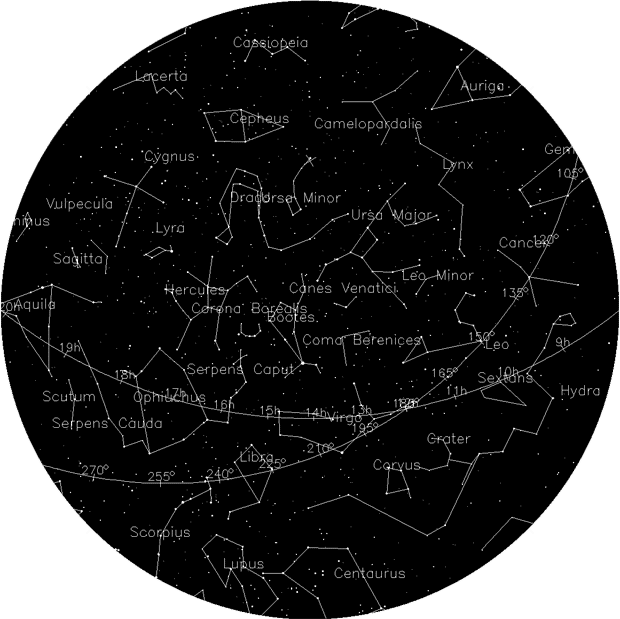DARK SKY HAPPENINGS - June 2021
Moab
UT (at City Hall)
38O34’ N Latitude
109O33’ W Longitude
4048 ft - 1234 m |
Photographing the Milky Way
By Joette Langianese
 In my career designing and running photographic tours all over the world, I've learned first-hand how much photographers value the ability to capture images that are impossible to get close to home. In my career designing and running photographic tours all over the world, I've learned first-hand how much photographers value the ability to capture images that are impossible to get close to home.
Moab attracts photographers not only for the incredible landscapes, but often to image those landscapes at night, under a starry sky or a bright Milky Way.
Sunrise-Sunset
for June
(The time of sunrise and sunset assumes a flat horizon. Actual time may
vary depending upon the landscape.) |
 |
While Moab's skies are much darker than the sky above most visitor's homes, light pollution around Moab is a growing concern. Thankfully, steps are being taken to ensure that the light pollution dome that currently sits over the city will not increase—and will hopefully decrease—in the coming years, ensuring photographers and night sky enthusiasts of all sorts will continue to frequent the city.
In the meantime, photographers must find ways to work around the dome of light that washes out the Milky Way, dimmer stars, and many other celestial wonders.
Here are a few tips:
- Head south of Moab to find shooting or viewing locations. The center of the Milky Way—the brightest, most colorful portion of the Milky Way to image—is visible in the southeast, south, and southwest during the months of May-Sept. Getting south of the city minimizes the impact of Moab's light dome since it won't be between you and the Milky Way. This is, by far, the most effective suggestion for dealing with light pollution!
- Image around the new moon. This is true while imaging the Milky Way in any sky, but particularly when light pollution is present. Moonlight will further wash out the light of the Milky Way, making it even more difficult for imaging. However, little or no moonlight also means darker foreground objects/formations, so try shooting those as silhouettes against a bright Milky Way or starry sky!
- Use a light pollution filter. Frankly, these are marginally effective and will affect the quality and output of your image. Some give the sky a warmer (reddish) or cooler (bluish) color cast, and most will block not only some of the light pollution but also dimmer stars and dimmer parts of the Milky Way. Most of these filters are designed to block the wavelengths of high-pressure sodium streetlights—as opposed to LED—which are primarily what Moab employs. In this sense, they are effective for use around Moab, though the downsides noted above should be considered!
- Use post-processing software and programs. These programs can have a steep learning curve and are geared towards advanced imagers, but they can certainly help.
MOON HAPPENINGS
June 10 - New Moon at 4:52 am
June 17 - First Quarter at 9:54 pm
June 24 - Full Moon at 12:39 pm |
Moab Dark Skies' mission is to promote the appreciation and conservation of Moab's valuable and rare dark skies. Moab Dark Skies was established by the Friends of Arches and Canyonlands Parks in conjunction with the National Park Service and Utah State Parks Division of Natural Resources.
For more information, check out our Facebook page. |
|
 In my career designing and running photographic tours all over the world, I've learned first-hand how much photographers value the ability to capture images that are impossible to get close to home.
In my career designing and running photographic tours all over the world, I've learned first-hand how much photographers value the ability to capture images that are impossible to get close to home. 
